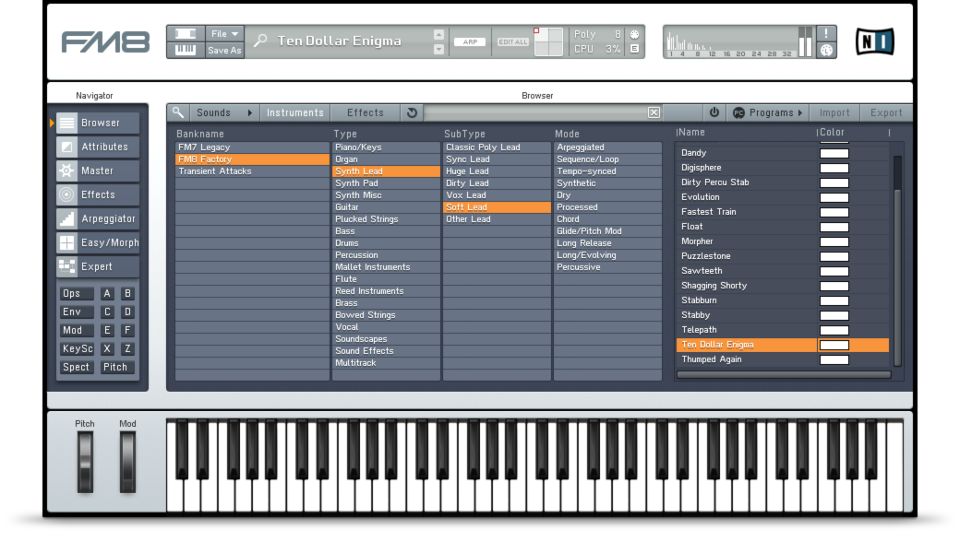


John deposited and registered the technique, which was later used by Yamaha for its legendary DX7 in 1982, a digital hardware synthesizer. FM synthesis saw the light between 19, with its acknowledged father John Chowning. In FM things go differently: a simple waveform’s timbre (usually a sine wave) is modified by another waveform, which modulates the frequency of the first one, and this results in added harmonics (sidebands), thus the timbre is modified. In subtractive synthesis, a harmonically rich sound source is filtered to shape the sound.


As usual, these are just general guidelines, feel free to experiment! Then we will analyze the most evident characteristic of a gong sound, operation that will guide us through the process of sound design, and lastly we will build, step by step, the algorithm in FM8, while talking about the synth capabilities and parts. FM can lead to precise, realistic and organic sounds, but, on the other hand, it needs careful programming and, last but not least, a careful analysis of the sound we are going to create.īefore describing how we crafted the sound, we will devote a few words to the FM synthesis technique, and then we will briefly describe how it works. FM synthesis is often overlooked because it is less intuitive than subtractive synthesis, and it needs more effort to understand how it works, but it is not rocket science, and we will try to give the basics of these synthesis techniques while creating the sound of a substantial-sized gong. In this installment we will be looking at how to recreate a gong sound in another synthesizer by Native Instruments: FM8. Ever wonder how the sound of a cinematic-sized gong (think hanging next to the throne of Ming the merciless) could be synthesized? Turns out that’s it’s not all that obvious.ĭrum synthesis – what a wonderful world! In the last installment, we had a tour of Native Instruments Massive while recreating a snare sound.


 0 kommentar(er)
0 kommentar(er)
